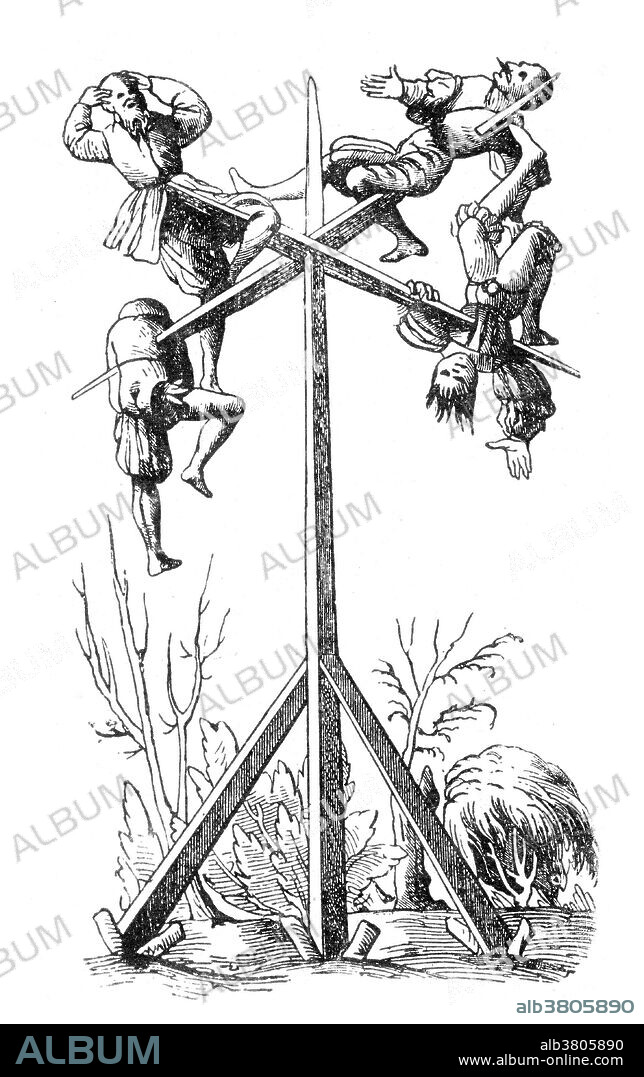alb3805890
Impalement, Method of Torture and Execution, 1552

|
Ajouter à une autre Lightbox |
|
Ajouter à une autre Lightbox |



Avez-vous déjà un compte? S'identifier
Vous n'avez pas de compte ? S'inscrire
Acheter cette image

Titre:
Impalement, Method of Torture and Execution, 1552
Légende:
Voir la traduction automatique
Die strafe des pfahlens (Penalty of the post). Impalement, as a method of execution and also torture, is the penetration of a human by an object such as a stake, pole, spear, or hook, often by complete or partial perforation of the torso. It was used particularly in response to crimes against the state and regarded across a number of cultures as a very harsh form of capital punishment and recorded in myth and art. Impalement was also used during wartime to suppress rebellion, punish traitors or collaborators, and as a punishment for breaches of military discipline. Offenders have also been impaled for a variety of cultural, sexual and religious reasons. References to impalement in Babylonia and the Neo-Assyrian Empire are found as early as the 18th century BC. Within the Ottoman Empire, this form of execution continued into the 20th century. Woodcut from Sebastian Münster's "Cosmographia", 1552.
Crédit:
Album / NYPL/Science Source
Autorisations:
Modèle: Non - Propriété: Non
Questions sur les droits?
Questions sur les droits?
Taille de l'image:
2924 x 4650 px | 38.9 MB
Taille d'impression:
24.8 x 39.4 cm | 9.7 x 15.5 in (300 dpi)
Mots clés:
 Pinterest
Pinterest Twitter
Twitter Facebook
Facebook Copier le lien
Copier le lien Email
Email
